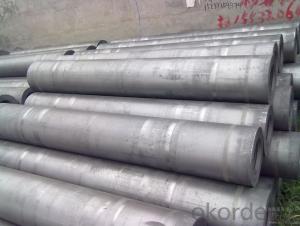When we talk about graphite electrodes, we’re diving into a world of heat, electricity, and some serious industrial applications. These cylindrical wonders are the unsung heroes of the metallurgical world, playing a vital role in electric arc furnaces (EAFs) and ladle furnaces. They’re not just any old sticks; they’re the heart of the operation, conducting electricity and generating heat to melt down scrap metal and refractory materials. But how are these graphite electrodes made? Let’s get down to the nitty-gritty and explore the production process like we’re on an adventure, because it’s anything but boring.
First things first, we need to understand the raw material – graphite. It’s a form of carbon, just like diamond, but let’s not get into the ‘better than’ debate. Graphite is the king when it comes to heat and electricity conductivity, and it’s got that slippery feel that makes it perfect for our purposes. It’s also got that ‘leave no trace’ quality, which is great for not contaminating the molten metal we’re working with.
The production journey of a graphite electrode begins with the selection of raw materials. It’s like picking the best ingredients for a recipe. You want high-quality petroleum coke and coal tar pitch, mixed in just the right proportions. This mixture is then cooked up in a process called ‘paste production,’ where heat and pressure do their magic to create a homogeneous mass. It’s like making a cake batter, but instead of baking it, we’re setting the stage for something much more robust.
Next, we move on to ‘molding’ – not the emotional kind, but the literal shaping of our electrode. This is where the paste is pressed into its final shape, using hydraulic presses that exert a force so intense, it’s like trying to hug a mountain. Once the shape is set, it’s time for ‘baking’ – or as the pros call it, ‘graphitization.’ This is a high-temperature treatment that transforms the carbon in the electrode into graphite, enhancing its electrical conductivity and thermal shock resistance.
But wait, there’s more! After graphitization, the electrode undergoes a ‘purification’ process, which is like giving it a spa day. This step removes any remaining impurities, ensuring that the electrode is as pure as driven snow. Then, it’s time for the final touches – ‘machining’ and ‘impregnation.’ Machining is where we fine-tune the electrode’s dimensions, and impregnation is like giving it a protective coating, usually with a resin, to improve its strength and durability.
Throughout this entire process, quality control is like a hawk, keeping a close eye on every step to ensure that the final product is up to snuff. This is crucial because the performance of the electrode directly impacts the efficiency of the furnace and the quality of the metal produced.
Now, let’s talk about the different types of graphite electrodes – there are three main categories: standard, high-power, and ultra-high-power. Each type is tailored to different needs and applications, with varying levels of conductivity and strength. It’s like choosing between a sports car, a truck, and a tank – they all get the job done, but in different ways and for different purposes.
Standard electrodes are your basic workhorses, suitable for smaller EAFs and less demanding applications. High-power electrodes are a step up, with improved conductivity and strength for medium to large EAFs. And then there’s the ultra-high-power electrodes, the heavy hitters that are designed for large EAFs and can handle the most demanding conditions.
The production of graphite electrodes is a delicate balance of art and science, requiring precision and expertise. It’s not just about churning out a product; it’s about creating something that can withstand the intense conditions of the furnace and contribute to the production of high-quality metals.
In the world of metallurgy, graphite electrodes are the silent partners, working tirelessly behind the scenes. They may not get the glory, but they’re essential to the process. So, the next time you see a furnace in action, give a nod to the graphite electrodes – they’re the real MVPs of the operation.
And there you have it – a comprehensive, yet not too serious, look at the production of graphite electrodes. It’s a fascinating process that’s integral to the metallurgical industry, and now you know a little more about these unsung heroes of the furnace.

